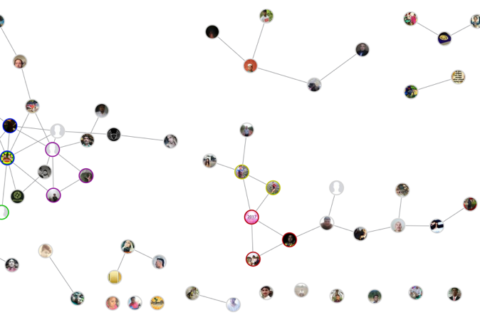Side Effects

Despite ongoing efforts to derisk supply chains, the global pharmaceutical industry continues to rely heavily on active pharmaceutical ingredients and other related products manufactured in XUAR using Uyghur forced labor.
Executive Summary #
As part of an organized campaign spanning national and regional governments, the Chinese Communist Party (CCP) subjects Uyghur and Turkic peoples to ongoing repression. This has taken the form of forced labor and assimilation, mass detention, and coercive labor and land transfers in the Xinjiang Uyghur Autonomous Region (XUAR). These human rights abuses have drawn ample public reporting and international outcry, leading to legislation such as the U.S. Uyghur Forced Labor Prevention Act (UFLPA), designed to block imports of XUAR-linked products into the United States. However, since its passage, dark data environments, complex supply chains, and policy implementation obstacles have continued to enable the CCP’s human rights abuses. As manufacturers, importers, and end-users continue to inadvertently consume everything from food to construction materials linked to the Uyghur Region, stakeholders must examine current due diligence limitations and propose new or improve existing formal avenues for reinforcing supply-chain restrictions like the UFPLA.
While China is the world’s largest active pharmaceutical ingredient producer and the second-largest pharmaceutical market in the world, the global footprint of XUAR pharmaceuticals has yet to be analyzed in depth. Not only are these products exposed to forced labor, but they also make the market riskier for governments and downstream consumers. Forced labor creates artificial trade advantages for entities that are actively exploiting marginalized people. These advantages concentrate market demand toward actors whose compliance with regulations is difficult to audit. To shed light on the pharmaceutical sector, public and private sector actors must coordinate their actions and shift consumer reliance on critical products from entities posing undue risk.
C4ADS has used publicly available information to identify and demonstrate key factors characterizing the permeation of Uyghur forced labor in the pharmaceutical industry. Each represents an opportunity to reduce the human and market security risks introduced by XUAR pharmaceuticals. Specifically, we found:
- International Government Connections to XUAR Pharmaceuticals. International government bodies continue to register and source from XUAR and XUAR-linked pharmaceutical companies. These bodies include the U.S. Food and Drug Administration (FDA), the U.S. Agency for International Development (USAID) via its contractor Chemonics International, and Japan’s Pharmaceutical and Medical Devices Agency (PMDA).
- Pharmaceutical products being manufactured solely in XUAR expose global supply chains to forced labor. Seventy-six pharmaceutical products exported from China, including some over-the-counter pain relief products, are only produced in XUAR. According to official Chinese data, any of these specific products sourced from China can be definitively linked to the Uyghur region.
- The world depends on XUAR-based manufacturers for many critical pharmaceutical products. The Uyghur region is the fourth-largest manufacturing base for Sinopharm (中药集团有限公司), China’s largest pharmaceutical company. XUAR-based Xinjiang Deyuan Bioengineering (新疆德源生物工程有限公司) is among the top ten Chinese manufacturers of drugs derived from human-sourced plasma. Meanwhile, Xinjiang Nuziline Bio-Pharmaceutical (新疆新姿源生物制药有限责任公司), which produces a quarter of the world’s PMU (pregnant mare urine extract) estrogen, is the only company licensed in China to produce conjugated estrogen tablets and creams. Data shows that the XUAR region also has significant production volumes of traditional Chinese medicine (TCM).
These findings increase visibility into pharmaceutical products made profitable by human rights abuses associated with the Uyghur region. The United States, Mexico, and Canada already have forced labor legislation. In 2024, the European Union passed a forced labor ban which will come into effect within three years, and further policies are likely to pass globally. To avoid penalties commensurate with links to human rights abuses, private-sector actors can leverage this report’s insights. In parallel, policymakers can identify where supply chain due diligence has failed, where sanctions regimes can complement their efforts, and where licensing restrictions can be expanded in defense of human rights.
C4ADS updated this report on April 9, 2025 to correct a line on page 25 of the document. It now correctly reads: “However, Xinjiang Nuziline likely manufactures the products exported by Xinjiang Symbiotech; it is the only company licensed to produce these drugs.”






